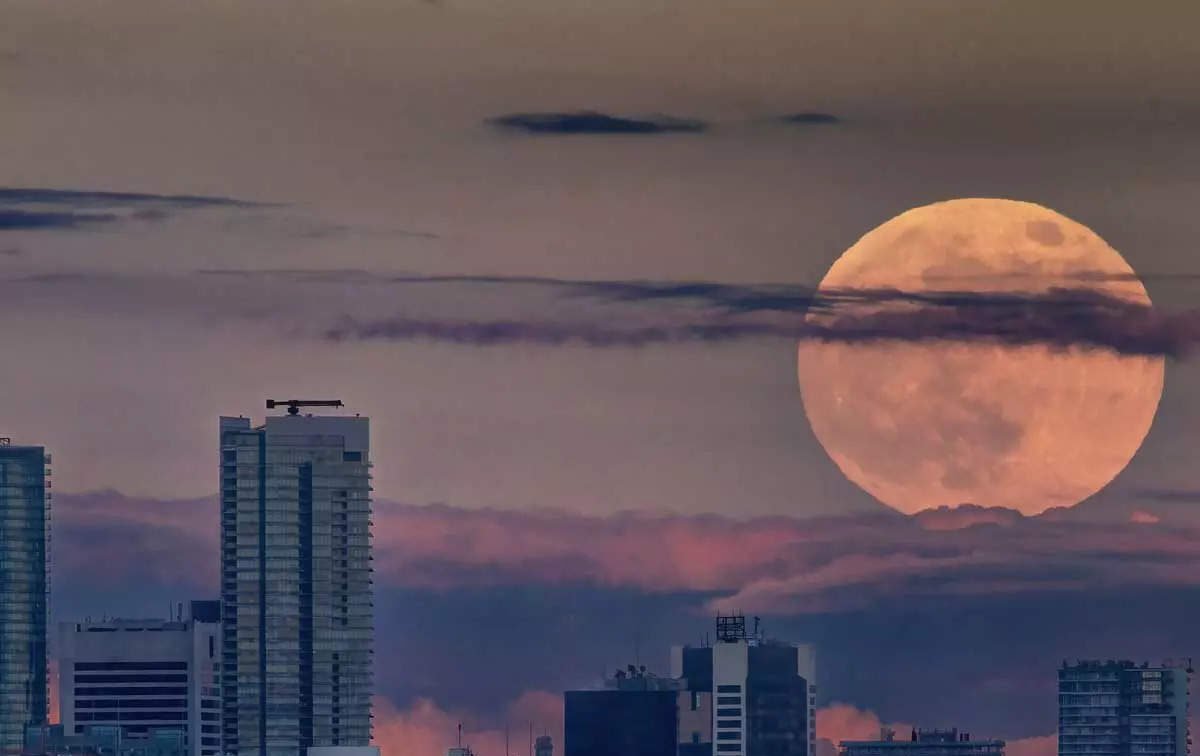In the celestial calendar of 2023, the year has already treated us to the mesmerizing sight of the first supermoon in July, leaving us eagerly anticipating the grand finale of this celestial spectacle, set to grace the skies in September. The upcoming supermoon fondly referred to as the ‘sturgeon moon,’ promises to be a celestial marvel that will captivate stargazers and sky enthusiasts alike. As we basked in the ethereal glow of the first supermoon, we now await the grand celestial event in September, embracing the magic of the cosmos and the wonders of our universe.
The’sturgeon moon’
Due to its orbital proximity to Earth, the full moon appears a little bit bigger and brighter during a “supermoon.” According to Time and Date, this is the first time since 2018 that we have had two full supermoons in the same month. The moon will be a supermoon on Tuesday, August 1, when it is only 357,530 kilometers from Earth.
The last supermoon for 2023 will take place in September, with this year’s first one being in July. The’sturgeon moon’ is another name for Tuesday’s supermoon. Read on for additional information here.
What makes it a “Supermoon”?

A unique type of full moon is referred to as a “supermoon,” a phrase that was first used in 1979. It is a phenomenon that takes place when the full moon occurs close to or at the point in its orbit where it is closest to Earth. The moon’s orbit is not a complete circle, therefore during its cycle, its distance from Earth varies. The distance between the moon and Earth during its perigee, or point of closest approach, and apogee, or point of greatest distance, is 48,280 kilometers.
A supermoon is known scientifically as a “perigee-syzygy of the Earth-Moon-Sun system.” Syzygy, as used in astronomy, refers to a straight-line arrangement of three celestial planets. ‘Perigee full moon’ is another term for a supermoon. According to time and date, the full moon in August is also known as the “sturgeon moon” because in the past, a large number of sturgeon fish were discovered in the North American Great Lakes around this time of year.
The lake sturgeon is the most prevalent sturgeon in the Great Lakes. Sturgeon species can have males live up to 55 years and females up to 150 years. The lake sturgeon, the oldest and largest natural animal in the Great Lakes, and the largest surface freshwater system in the world, was crucial to the local natural American tribes.
Timing in India
On August 2, at 12:02 a.m., Indians might have seen the supermoon at its fullest. The second supermoon of the month will appear on August 31, but because it will peak at 7.05 am, it might not be visible in India.
Super Blue Moon is next

There are two varieties of blue moons, according to NASA. One is a blue moon, which occurs every season. It is the third full moon of a season with four full moons. The second Full Moon in a month with two Full Moons is known as a blue moon, and it occurs every month.
Contrary to what is commonly believed, blue moons can really happen very regularly in terms of astronomy. According to Time and Date, the next monthly blue moon will occur on August 30/31, 2023. The following blue moon will occur in the season on August 19–20, 2024. The next super blue moon will occur in August 2032, nine years after this one. The last one occurred in December 2009











Be First to Comment